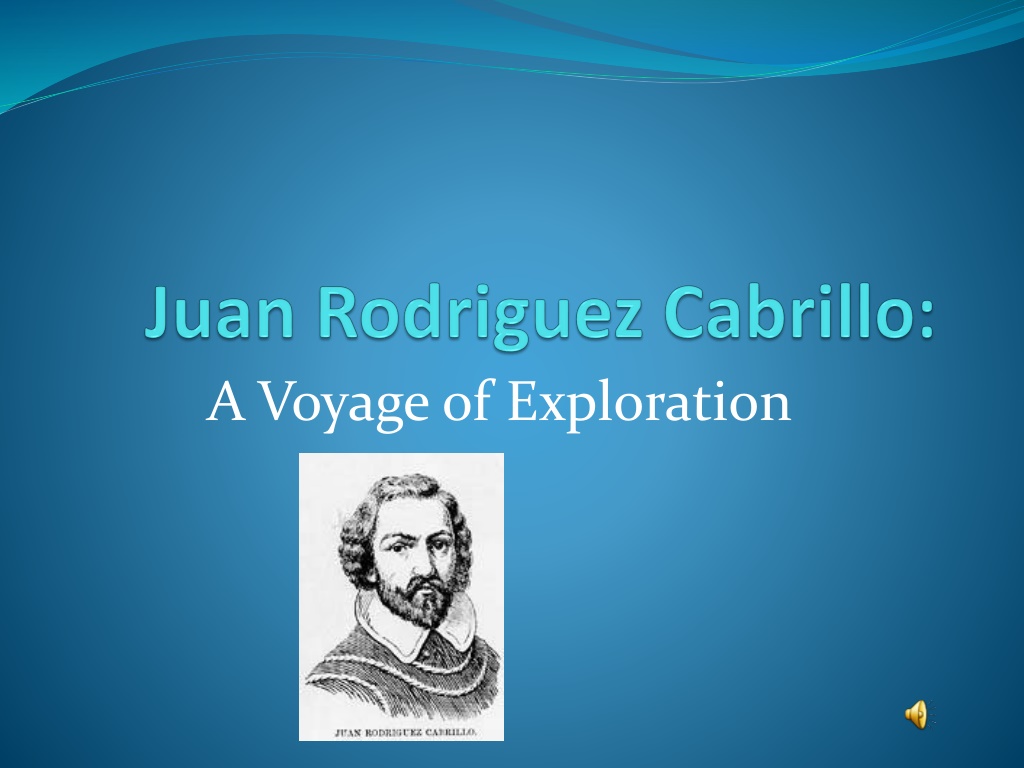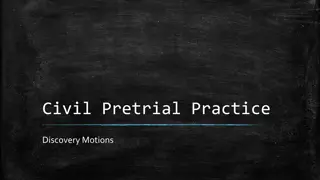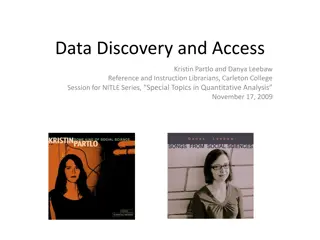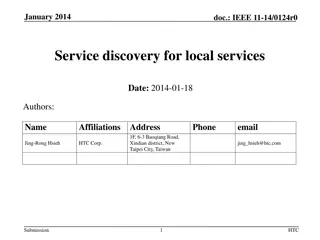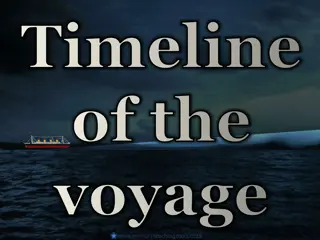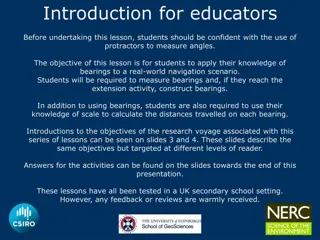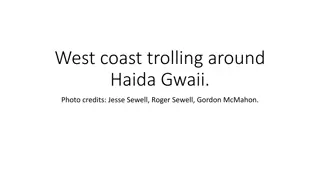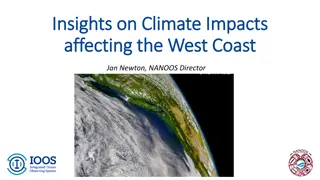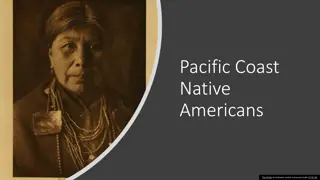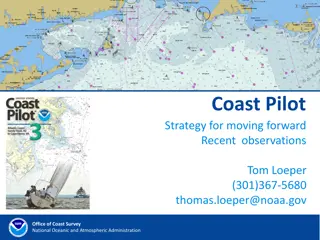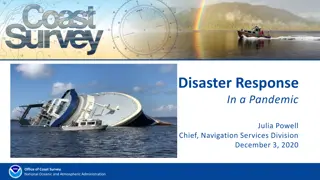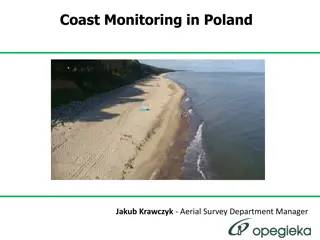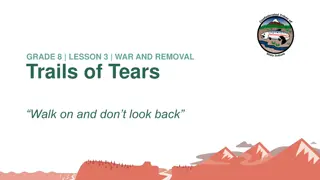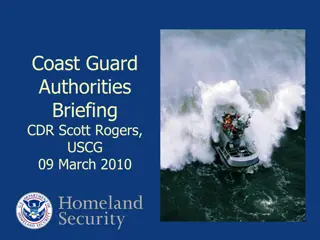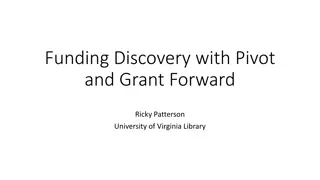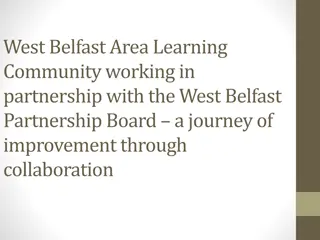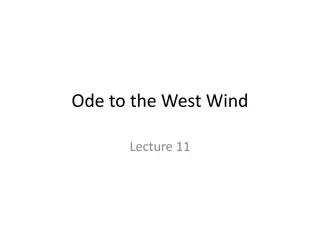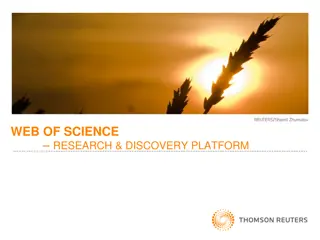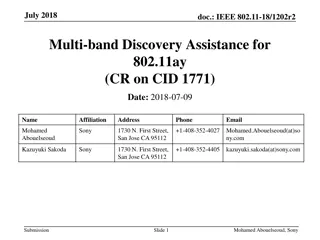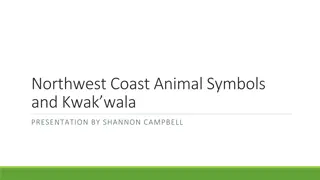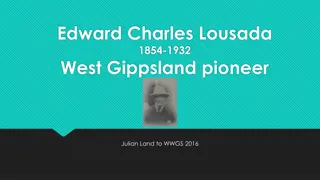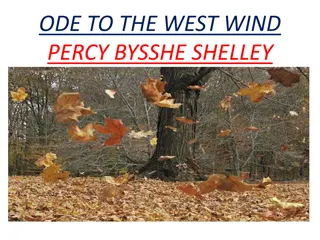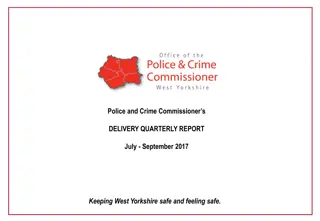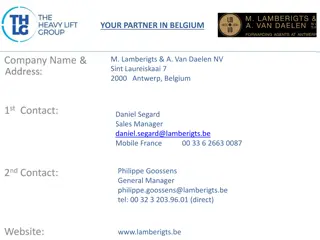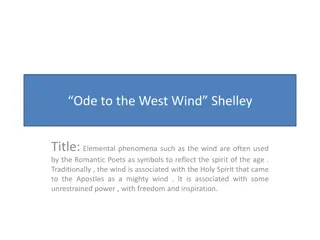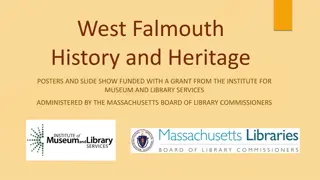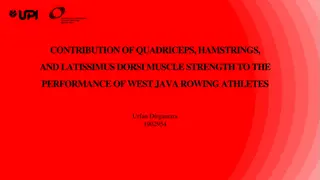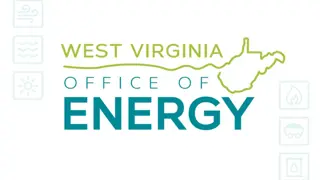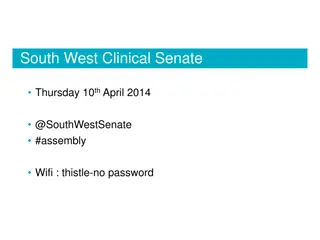Exploring the West Coast: Cabrillo's Voyage of Discovery
Juan Rodriguez Cabrillo's expedition to explore the West Coast of the United States, commissioned by King Carlos I of Spain, led to the discovery of San Diego Bay in 1542. Despite not finding the sought-after treasures, Cabrillo successfully charted the coast, leaving a mark on the land and history of California. Discover the journey of Cabrillo and the significance of his exploration in this historical narrative.
Download Presentation

Please find below an Image/Link to download the presentation.
The content on the website is provided AS IS for your information and personal use only. It may not be sold, licensed, or shared on other websites without obtaining consent from the author. Download presentation by click this link. If you encounter any issues during the download, it is possible that the publisher has removed the file from their server.
E N D
Presentation Transcript
California History/Social Science Content Standards for California Grade 3 Grade 3: 3.3 Students draw from historical and community resources to organize the sequence of local historical events and describe how each period of settlement left its mark on the land. 1. Research the explorers who visited here, the newcomers who settled here, and the people who continue to come to the region, including their cultural and religious traditions and contributions.
Introduction: Juan Rodriguez Cabrillo was the first European to visit and chart the West Coast of what is now the United States. he carried commission from King Carlos I of Spain to explore the lands north of Mexico. Accompanying him and his crew were a priest, Indian interpreters, and adequate food provisions for use during times that fresh foods were not available. Cabrillo, an exceptionally skilled shipbuilder, built his ships in Guatemala. The fleet consisted of two sailing caravels, San Salvador and Victoria, and a bergantina, San Miguel.
Finding a shorter route to Asia was the primary goal of the expedition. Cabrillo also hoped to find valuable spices, cities of gold, and a land of beautiful Amazon women. Instead, he charted the coast and found a "closed and very good" harbor that he named "San Miguel," now known as San Diego Bay. Cabrillo began his journey in Navidad, Mexico. One hundred and three days later, on September 28, 1542, his ships entered our bay. Cabrillo probably went ashore at Ballast Point, the location of the Naval Submarine Base today. There he claimed the land for Spain. Over 60 years later, in 2602, Sebastian Vizcaino changed the name from San Miguel to San Diego.
Although, this is an expedition map of the explorer Sebastian Vizcaino, you can see the starting point of Navidad, Mexico and the city of San Diego where Cabrillo landed three months later.
Cabrillos sea route for his expedition.
The Native American Indians living in this area when Cabrillo arrived were called Kumeyaay. They gathered many plants for food and medicine. Their most frequently used food were acorns, which were shelled, ground leached and then cooked in baskets. Cabrillo made friends with the Kumeyaay and traded with them for fresh water and other supplies.
The Cabrillo expedition continued northward past Monterey Bay and Point Reyes to the Russian River. Storms forced the ships out to sea and the discouraged men returned south to the Channel Islands for the winter. Cabrillo died on these islands on January 3, 1543. Before his death, he implored his crew to continue the northward journey. The disheartened men, without Cabrillo as their leader, again turned north along the coast as far as the Rogue River of Oregon before returning to Mexico.
Most of the records of Cabrillo's epic voyage have been lost. Later explorers knew very little about his quest. Other Europeans did not settle the coast that he had explored until many years later in 1769. Although his quest was incomplete, the maps told of a land that was inhabited by native peoples. It identified areas where future exploration as well as settlement would be advisable. Juan Rodriguez Cabrillo will forever be remembered for his courageous navigation along unknown waters in ships and with instruments that would be crude to us today.
In 1913, President Woodrow Wilson signed a proclamation creating Cabrillo National Monument on the half acre of land occupied by the Old Point Loma Lighthouse.
The Voyage with Cabrillo-The Adventures of a Paje (pah-hey) (Ship's Page) Date: September 28, 1542 Place: San Diego harbor My name is Miguelito and I have been away from my home for three months now. I am a paje for Captain Juan Rodriguez Cabrillo on his ship, the San Salvador. I was so excited when we first left Navidad, and so happy to get away from working every day in the cacao fields. I worked for Senor Cabrillo, just like the rest of my family. But is this any better? At least at home my mother would cook hot food for me. On this ship I have to eat the same thing every day: dried meat or fish mixed with olive oil, maybe some smelly beans or moldy bread that is as hard as a rock. I miss my family and I want to go home.
Most of the time the water tastes so bad that we drink wine. At each meal we say grace and then pull worms out of our food before we begin to eat. The captain says that when we are out at sea, it is too dangerous to light a fire on a wooden ship, so we eat things that do not have to be cooked. Now that we are at anchor, we can go ashore and get fresh foods. Maybe someone will kill a deer. I want to fish for a while. A good big fish would taste wonderful.
There was a furious storm last night. If we had been out at sea, the wind and rain would have rocked the ship to and fro, getting everyone and everything soaked. many of us would have been seasick. But our ships are anchored in a large bay near the little finger of land that guarded the harbor entrance. We are protected from the winds here. In the log, Cabrillo wrote, "...we discovered a port closed and very good." Even though the weather is stormy, the Captain will go ashore and do a special claiming ceremony today. he promised to name this place San Miguel.
Captain Cabrillo is very proud of our little fleet of ships. I know he is especially proud of the San Salvador. He often stands on the deck of this galleon and looks at the beautiful ship he designed and built in Guatemala. The San Salvador is nearly 100 feet long and 25 feet wide. He was pleased that this ship handled well. It has brought us safely a thousand miles along the coast of California to where no other Spaniard has gone before.
When we left New Spain we all hoped to become rich by sailing to China, and perhaps discovering gold. We have found friendly people, fresh water and some food. We have not found much gold or anything else of value. And worst of all, this coastline goes mostly north and that does not lead toward Asia. The Captain says that we need to continue our voyage and map the coast. Hopefully we will soon reach the places where will trade our trade goods for spices, silks, and other things that we can sell when we get back to New Spain. But the men have been telling me this for three months and still we find nothing of value!
We have other responsibilities than just finding places to trade for spices, silk, and maybe gold. We are looking for fresh water ports. This will tell us that we have found rivers emptying into the ocean. We have only found harbors that have salt water. But surely, finding friendly people is not enough to make the trip a success. Friendly people bring us no money. When will we have any real success?
THE END OF THE STORY Miguelito, along with the crews of the three ships, returned to Navidad on April 14, 1543. The expedition provided a coastal map and a log of the area they visited. However, they did not find a waterway entering the ocean nor gold. They did not find the Spice Islands, or reach Asian waters. But they did find friendly people and a coastline that had adequate food and water for colonization. They had lost their Captain, and were discouraged by heavy seas and unpleasant weather. This coastline was clearly not what the early maps had pictured. But the land was under the guardianship of Spain. And one day it would provide them with great wealth. But not in 1543. In the years that followed the Spanish in New Spain learned how to use their resources to provide for their families and their people. New Spain expanded towards the north. It became a mighty nation and eventually separated from Spain. They called their country Mexico.
LETS MAKE A DECISION! Let s Make a Decision! Writing: Pretend you are an explorer! 1. Think about the kind of person who would be willing to travel to unknown lands. 2. Look carefully at the following word list. Choose four characteristics that should help a person be a good explorer. Hardworking Brave Intelligent Determined Healthy Dare devil Fearless Adventurous Good leader 3. Choose four words from the list, and place them in order of importance on a piece of paper. (#1 is the most important and #4 the least important.) 4. From this list of four characteristics, choose the ones that you have! Write a paragraph telling how these characteristics would make you a good explorer.
LOWER CALIFORNIA BY LAND AND SEA Lower California by Land and Sea Art: Recruiting Poster 1. Recruit means to encourage more people to join an army or navy. 2. Sea captains, even in Cabrillo s time, had to recruit sailors for their journeys. 3. Pretend you are a sea captain and make a poster encouraging people to become members of your crew to explore California. 4. Be sure to include a good slogan for your poster. Maybe something like: Join Cabrillo and Explore New Worlds.
NEW WORLD TO CONQUER New Worlds to Conquer Role Play 1. Today, our country is in the early stages of space exploration. We have placed objects on other planets and we have visited the moon. We have made the same kind of first conquest in space that Cabrillo made along our coast. It is the conquest of a New World. We really do not know what life is like in deep space. Let s pretend that you are in a space ship, and you contact people on another planet. What would happen? 2. What would be your first question to these people? Make a list of your questions. 3. Below are some questions that an explorer might ask. Are these questions fair? A. Are you friendly? B. Can we talk with them? C. Are we safe? D. What do they eat? E. What are their customs? Please decide if each question is fair, and give one reason why. Some questions require more information to get a good answer. 4. As a class, create a fictional planet. Divide the class into two nations. Ask each other questions, and act out the answers. Think carefully about how you would show the other nation that you are friendly, and what friendly really means.
WHAT WOULD YOU BE? What Would You Be? Creative Writing and Art: Shipboard Life 1. Pretend that you lived during the time of Cabrillo and you agreed to join his expedition. 2. What job would you like to do during the voyage? 3. You can choose from: Cook Soldier Cabin boy Crossbowman Sailor General helper 4. Write a story about your responsibilities during your voyage. 5. Draw a picture for your story.
